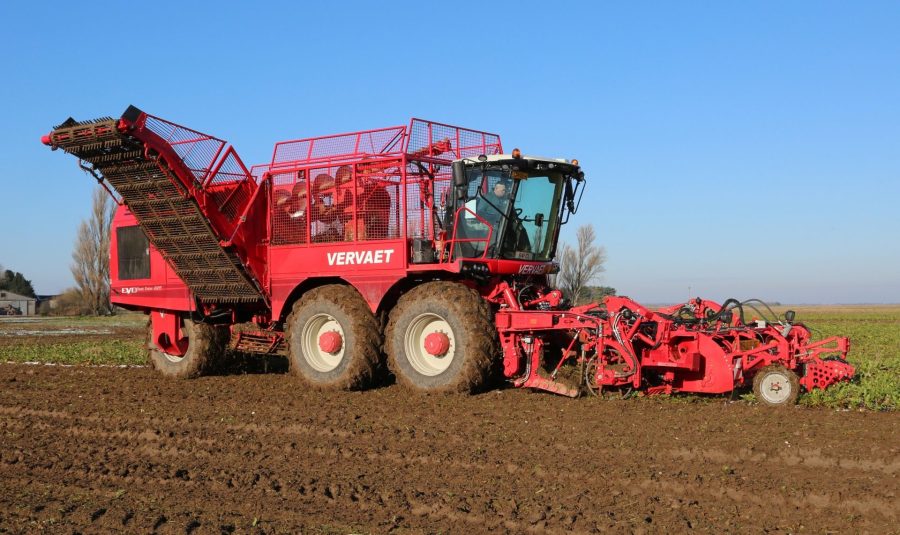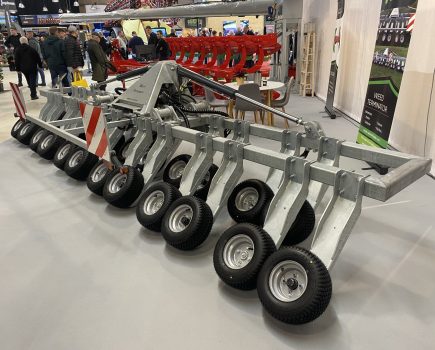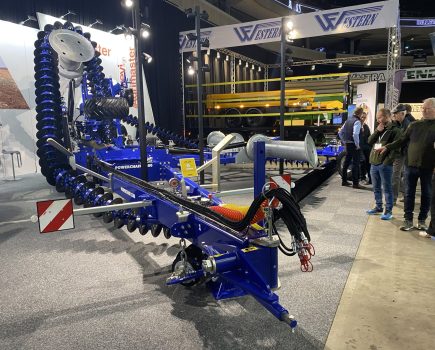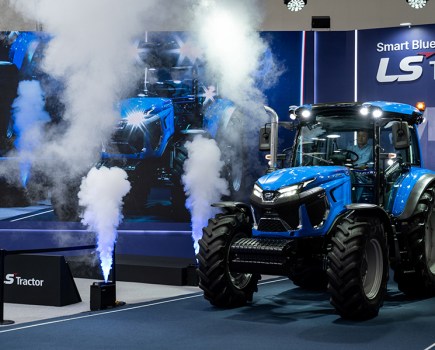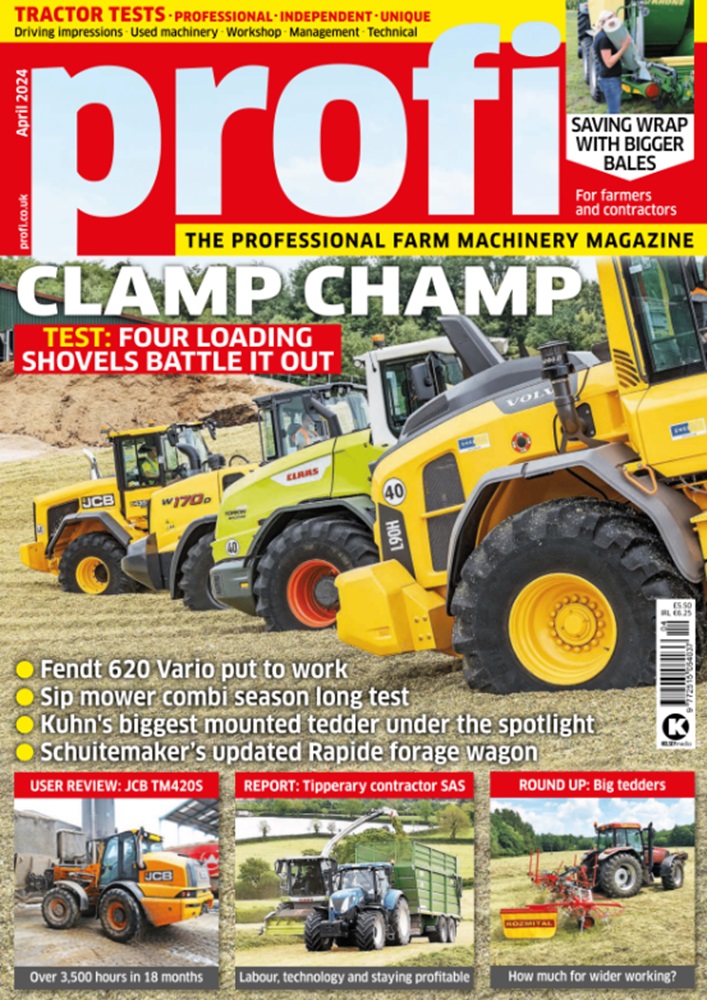On certain soil types the new rollerbed option from J Riley Beet Harvesters (UK) can allow for a faster sugar beet harvesting speeds.
Available in place of the existing turbine based system and currently suitable for the flagship six-wheel Vervaet Beet Eater 625 (anticipated that it will also be available for the four-wheel Q-Series in the near future), lifting is still carried out by rotating walking shares, and row width continues to be hydraulically adjustable from 45cm to 50cm.
The shares are arranged in a straight line so that they present the lifted beet evenly to the rollerbed which is used in place of the two front turbines and consists of seven full-width 100mm diameter rollers.
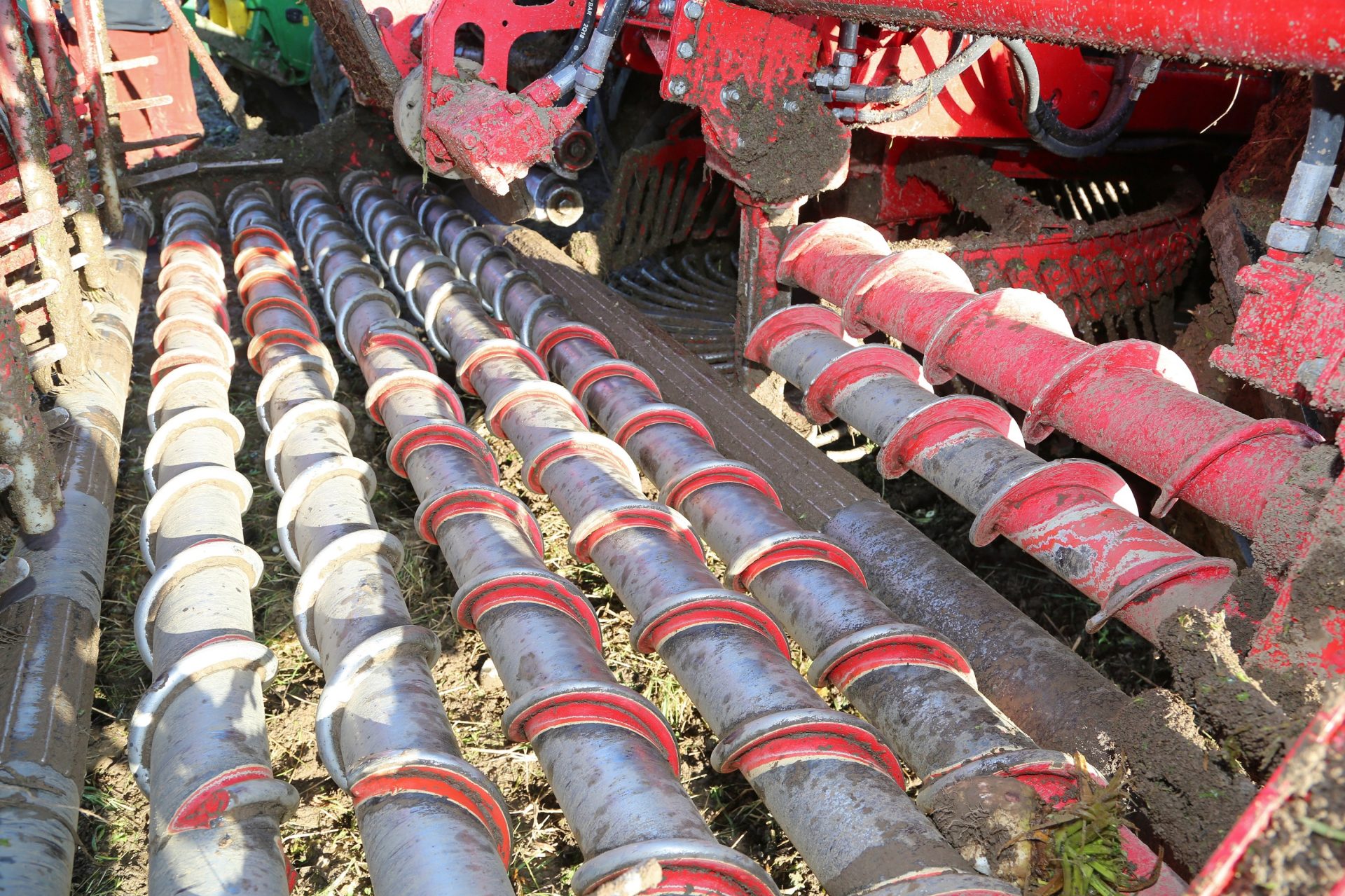
Roller speed can be varied from the cab, with the first six grouped together and the seventh roller operated independently. If additional cleaning is required the seventh roller can also be operated in reverse so that it counter-rotates against the preceding roller for a more thorough action.
All other rollerbed-type harvesters use a trace to transport the crop between the front wheels. Vervaet’s solution differs in that it discharges the beet onto a central cleaning turbine (already in use on over 160 Vervaet turbine-only harvesters currently at work in the UK). Even with a rollerbed in place of its first two turbines, the 625 still retains six turbines.
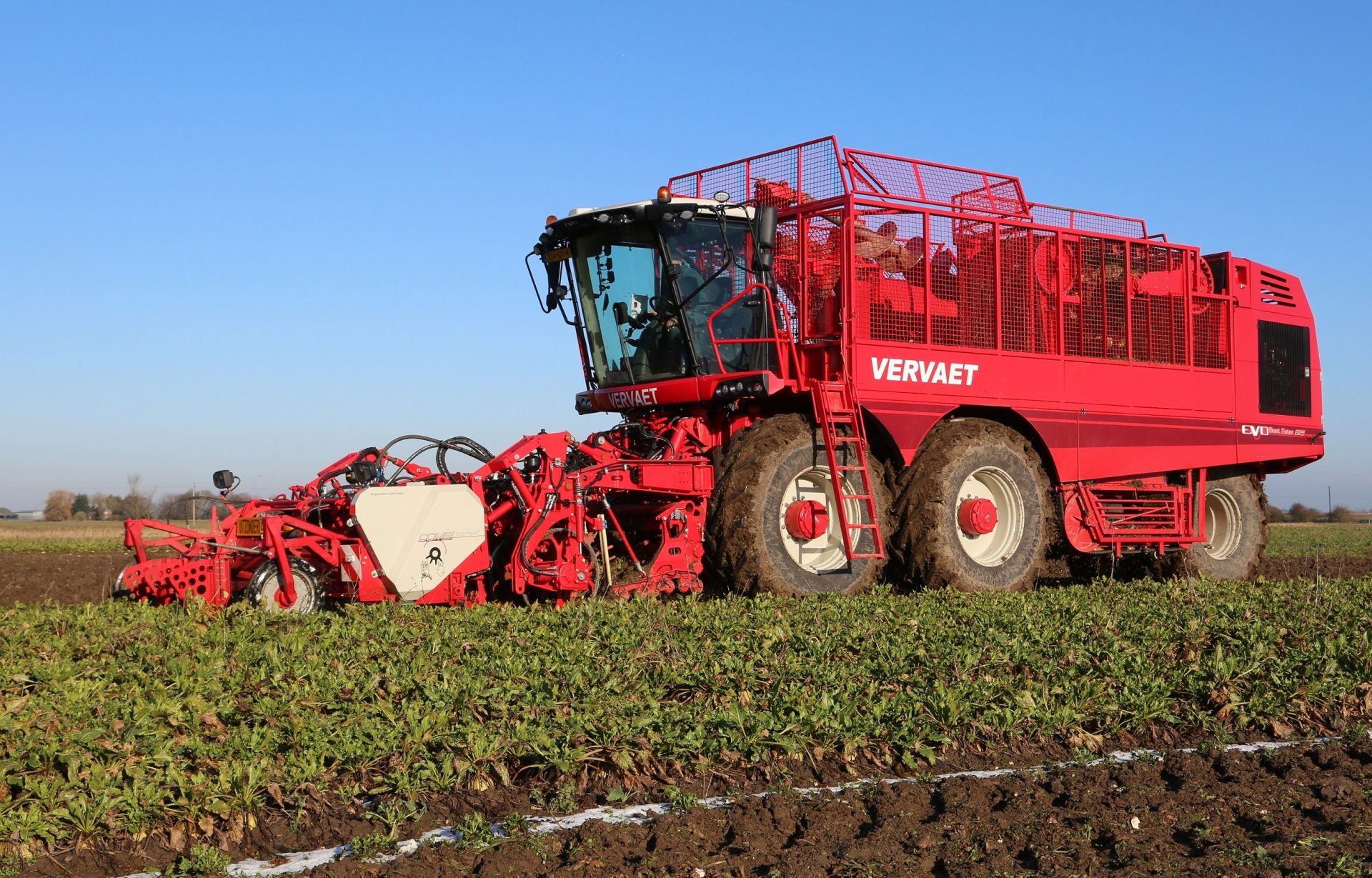
“We believe there is definitely a market for a rollerbed,” says Jeremy Riley, managing director of J Riley Beet Harvesters (UK), who adds that the Dutch manufacturer has managed to eliminate the less successful points of other rollerbed designs, namely the transport belt between the wheels.
“However it isn’t a replacement for the turbine configuration, because modern turbines will ultimately provide the most cleaning and we still believe that a turbine machine is the best all-rounder – we’re definitely not forgetting our heritage.”

